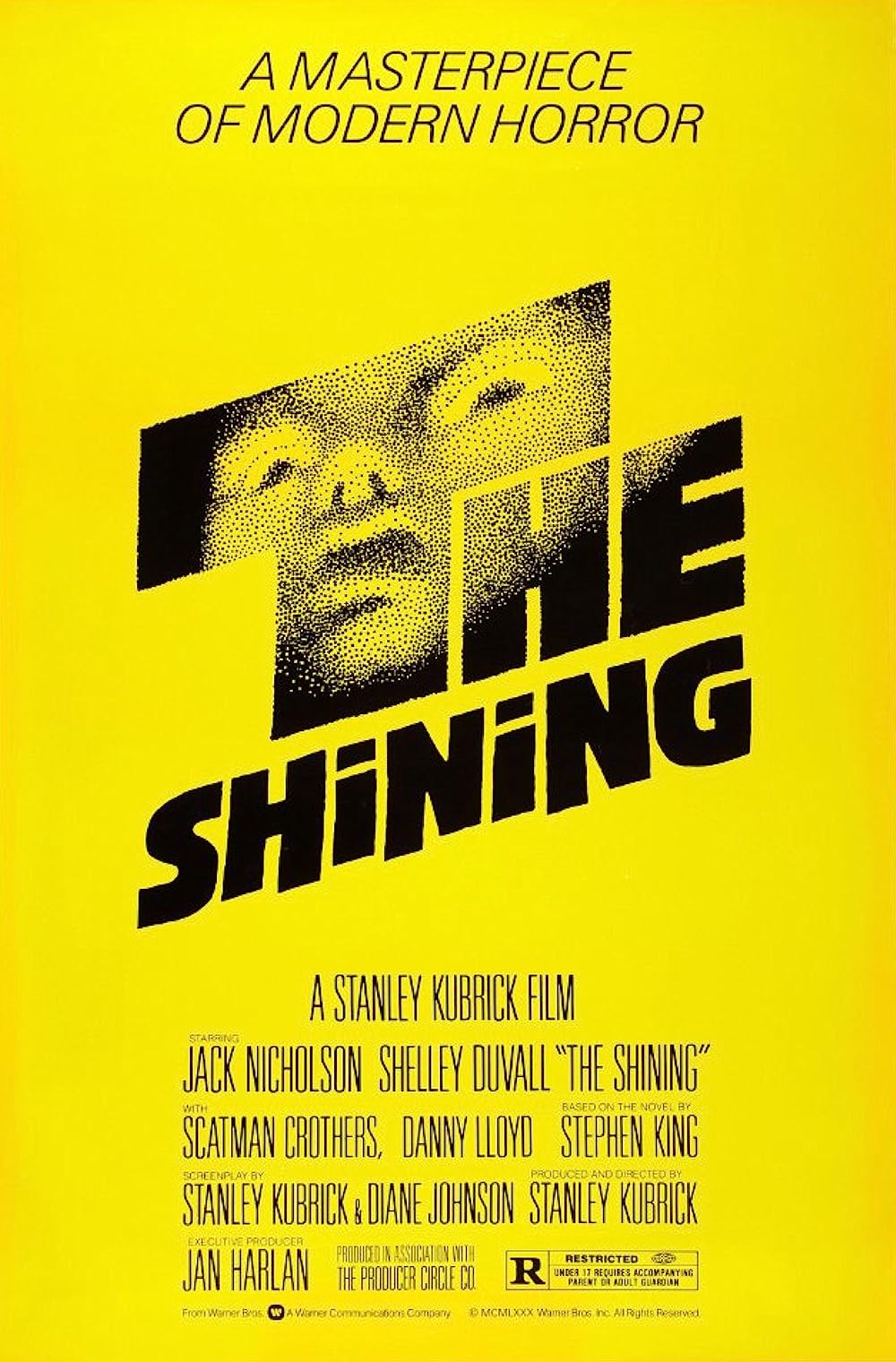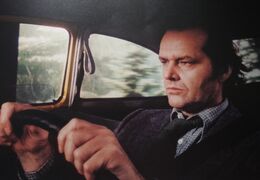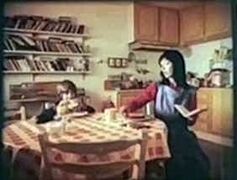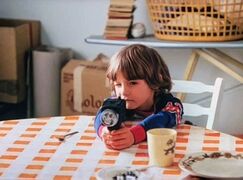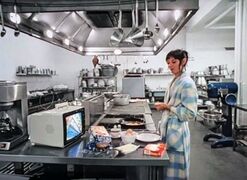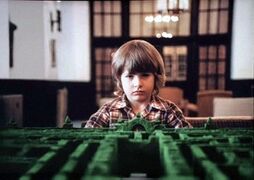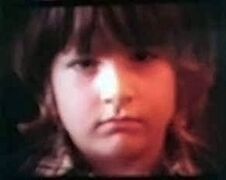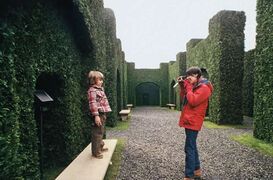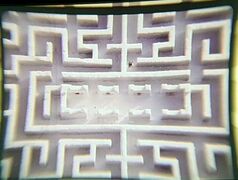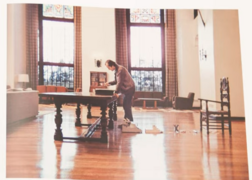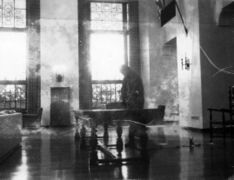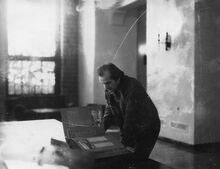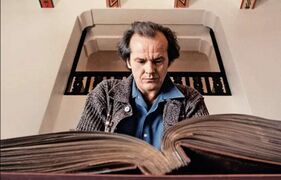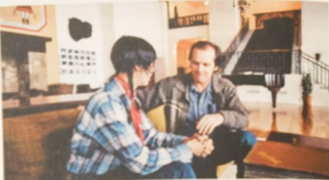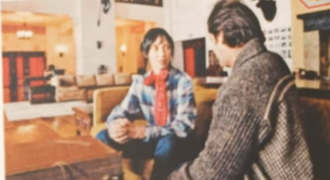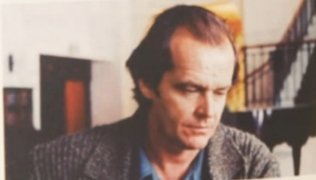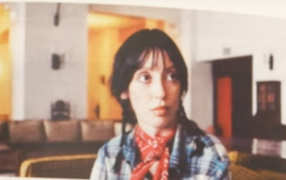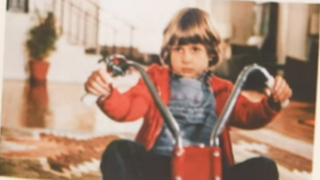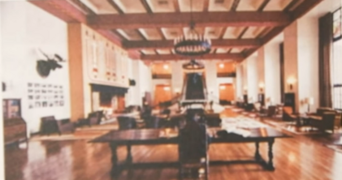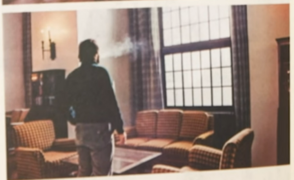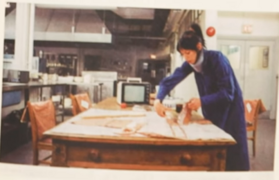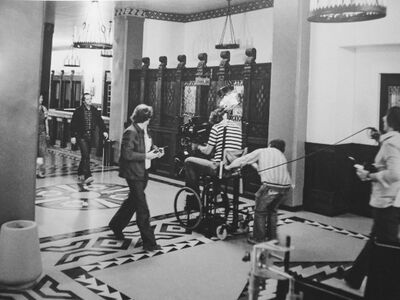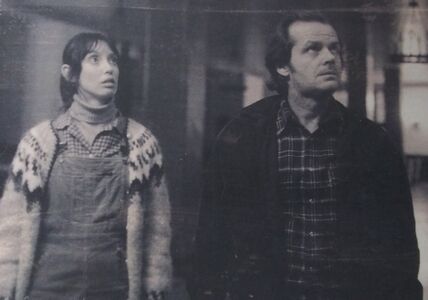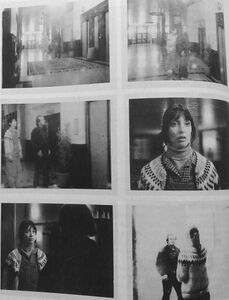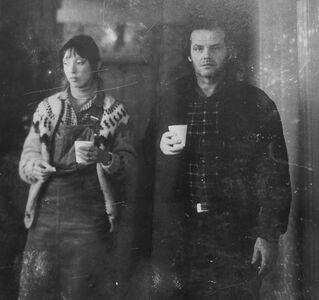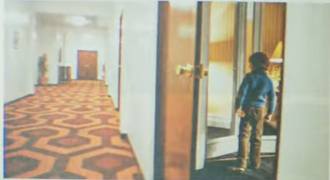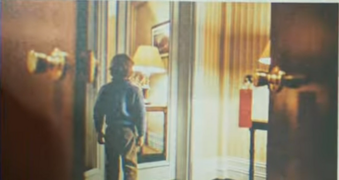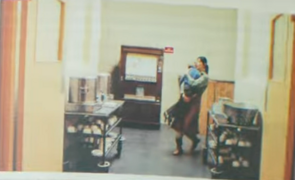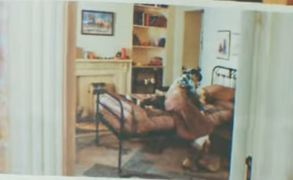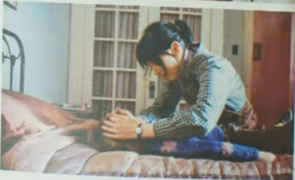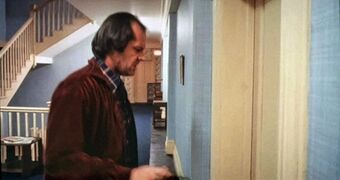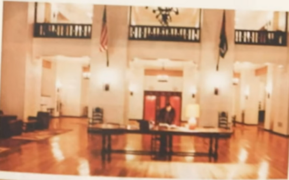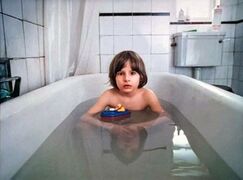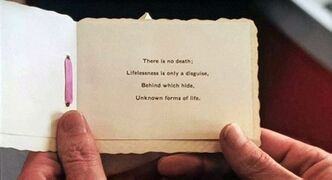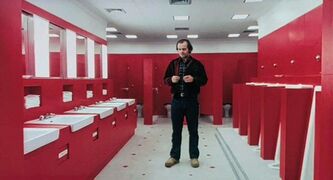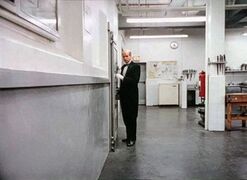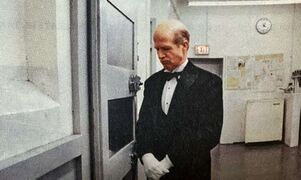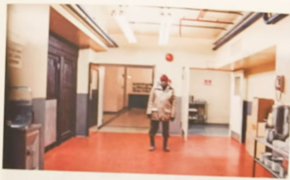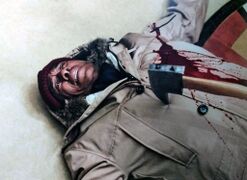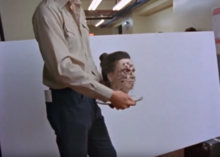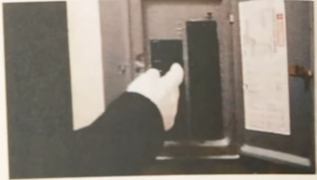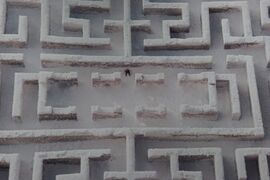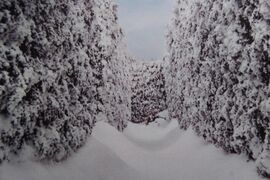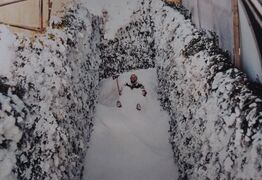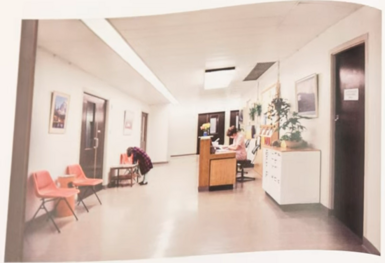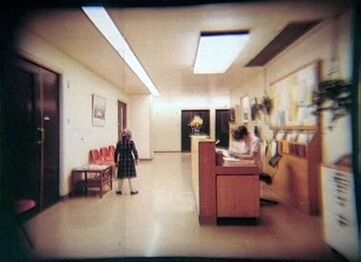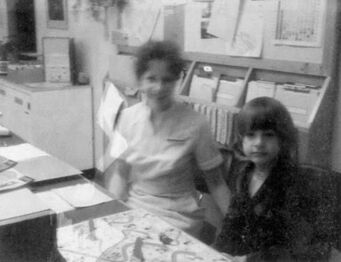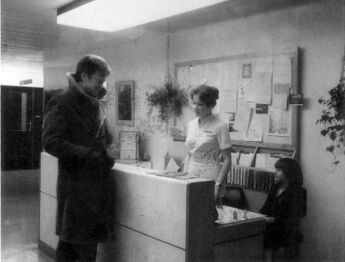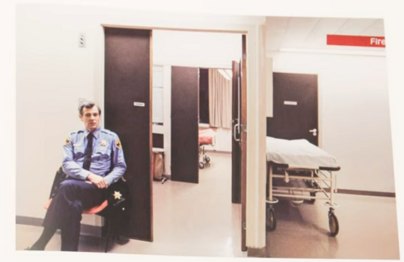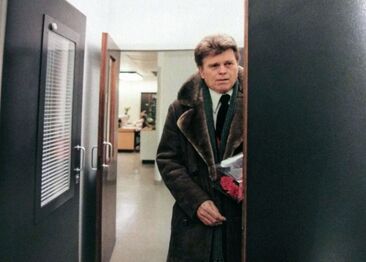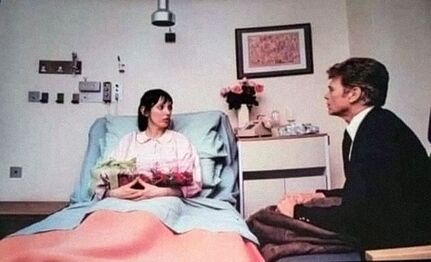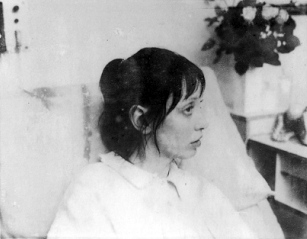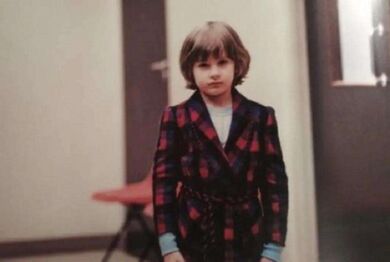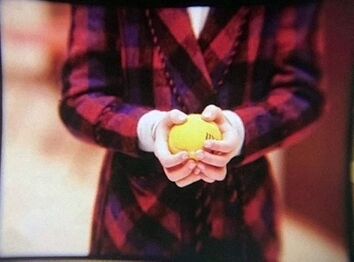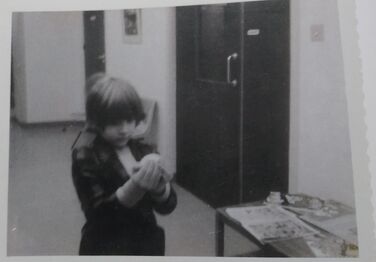The Shining (lost deleted scenes of Stanley Kubrick horror film; 1980)
Stanley Kubrick's The Shining is a 1980 psychological horror film based on the 1977 novel by Stephen King. It follows the Torrance family and their seclusion in Colorado's scenic beauty, the Overlook Hotel. The father, Jack Torrance accepts a job maintaining the hotel as it's closed over the cruel winter, following his failed teaching career. An aspiring writer, Jack seeks to pen his magnum opus during this period of isolation, unknowingly endangering his family and himself to elusive supernatural happenings at the haunted hotel - slowly tearing away at his already fragile mental state.
The film famously deviated from the original source material due to creative differences from Stanley Kubrick and screenwriter Diane Johnson. Because of this, many sequences and scenes were created exclusively for the film adaptation; the two of them cherry picked what scenes to lift from the original novel. During the process of post production, Stanley Kubrick continuously drafted notes to omit certain scenes from the workprint. Many of these omissions were to tighten the pace, or deepen the film's sense of ambiguity.
List of Deleted Scenes
(Editor's note: All timestamps are based on the 144-minute North American cut of the film.)
Jack's Drive to the Overlook Extended
The opening scene of Jack driving to the Overlook Hotel for his interview initially was longer. There were shots of Jack inside his car; these were filmed on the same rear screen set as the scene featured in the final film of the Torrances discussing the Donner Party.
Wendy and Danny at Breakfast Extended
- The scene introducing Danny and Wendy at 4 minutes and 17 seconds originally opened with a close-up of the TV, which would then pan over to Danny and Wendy sitting at the table. There was also a cut shot of Danny aiming his Star Trek Phaser.
Wendy Makes Breakfast
- A scene of Wendy preparing breakfast in the kitchen while watching Wheel of Fortune was cut at the 34 minutes and 21 second mark.
Danny's Hedge Maze Vision
- Right before Wendy and Danny enter the hedge maze at 38 minutes, a scene where Danny would've experienced a vision while staring into the model hedge maze was cut. This would've been a slow tracking shot zooming into his face.
Wendy and Danny At the Maze's Center
- The scene of Danny and Wendy exploring the hedge maze at 39 minutes was originally longer. The two of them would've found the center, where Wendy took a Polaroid of Danny standing on the bench. Kubrick intended to film a vision of the twins in the maze during this sequence, but it was never filmed.
A Vision of Jack's Fate
- A vision of the hedge maze model covered in snow was cut, which slowly panned in to show a miniature of Jack's frozen body visible inside of it. It is unknown when this scene took place.
Jack Discovers the Scrapbook
- Following the 39-minute mark in the film. After bouncing the tennis ball around the lobby and checking out the hedge maze model, Jack discovers a trail made from his writing materials. He slowly follows it into the Colorado Lounge, where he mysteriously finds a scrapbook sitting on his desk. After flipping through its many pages, he discovers it contains the bloody history of the Overlook Hotel, which he begins to use as inspiration for his writing project. The seeds of Jack's infatuation with the Overlook were planned to begin with this scene, which was inspired by the plot thread in Stephen King's original novel. Diane Johnson fought to include this scene in the final cut.[1] Remnants of the scrapbook's significance in the story can be found in the film, from its visibility on Jack's writing desk in several scenes and a line of dialogue from Jack when talking to the spirit of Delbert Grady: "I saw yer' picture in the newspapers..." The prop scrapbook can be viewed at The Stanley Kubrick Archives in London.
Jack's New Writing Project
- Immediately following the previous scene, at the 40-minute mark. An interaction regarding the scrapbook between Jack and Wendy was cut following the "Tuesday" title card. Wendy enters the Colorado Lounge after finding her way out of the maze with Danny and finds Jack seated on the couch flipping through the scrapbook. He informs her that the scrapbook contains "big money" for his new writing project. While flipping through it, he finds a photo of Grady right outside the door to the room they are staying in. The rest of the pages are strangely empty, and the scene ends with Jack announcing the title of the project - "Tales of the Winter Caretaker by Jack Torrance, a Winter Caretaker."
Danny Summons Jack For Dinner
A short scene followed Jack discovering the scrapbook, where Danny rode into the Colorado Lounge asking if Jack would join him and Wendy for dinner. Jack seemed distracted, and replied that he would make something for himself later.
The Torrances Play in the Snow
- After the snowstorm begins, a scene in which Jack joins Wendy and Danny out in the snow was cut. Wendy and Danny engage in a snowball fight and encourage Jack to join them. Upon starting to play, Wendy gets upset at Jack for "throwing them too hard."
Long after principal photography had wrapped on The Shining, Kubrick's Assistant - Leon Vitali, flew all the way to Malta to visit Duvall on the set of Popeye for her to record a wild track for this scene. Despite their efforts, it was cut.
Jack Looks Out the Window Extended
The iconic shot of Jack looking out the window originally began with a wide shot of the lounge. Jack would stretch and yawn as he grew bored writing. He then would approach the window, closing in on the shot seen in the final film.
Wendy Sews In the Kitchen
Following the last scene, a short scene would've featured Wendy sewing while watching TV in the kitchen.
The Mysterious Elevator
- A sequence was cut where Wendy discovers an elevator mysteriously operating on it's own, with balloons coming out of the doors. She promptly summons Jack to investigate it, but upon his arrival the elevator appears normal. He then gaslights her into believing she was imagining things.
This scene was only present in the very first assembly cut of the film; it was one of the first omissions in future workprints.
Danny Inside Room 237
The scene of Danny being lured into Room 237 originally went on longer to show his entire perspective inside of it.
The shots of the woman leaning out of the bathtub from Danny's perspective later in his montage of visions was repurposed from this scene.
Wendy Cradles Injured Danny
- A scene of Wendy carrying the injured Danny down the halls of the Overlook, following her argument with Jack at the 62-minute mark. This scene was first discovered in an auction for a workprint reel belonging to Kubrick's assistant, Emilio D’Alessandro. It is unknown who won the auction, leaving the question in speculation whether or not the public eye will ever see this footage.[2] After Wendy makes it back to her room, she cradles the catatonic Danny as Jack begins pounding on the door to be let in. After threatening violence, Jack kicks the door a couple of times and storms off.
Jack's View of the Colorado Lounge
- A scene of Jack walking down the Overlook corridors at the 77-minute mark of the film. According to steadicam operator Ray Andrew, "There was a scene of Jack walking through the hotel after he had just been in room 237 and encountered the old woman in the bathtub. I shot a scene with Jack where he walked down one of the hotel corridors and he ended up on the balcony above the Colorado Lounge and looked down [...] effectively revealing to the audience his perspective of the lounge."
Jack Discovers the Truth Behind Room 237
Following the previous scene of Jack wandering the hotel after his encounter in Room 237, he would make his way to the scrapbook on his desk.
Inside, he would learn of the bathtub woman's suicide after a lover's quarrel, learning about how she would become the creature he just saw. The scene ended with a closeup of Jack shutting the scrapbook closed.
Jack Hears a Ghost
- A scene where Jack "...discovers objects that have been arranged in his working space in the ballroom with arrows and things. He walks down and thinks he hears a voice and a ghost throws a ball back to him." As stated by the film's original composer Wendy Carlos, this scene featured her original score. It is unknown where this scene took place.
Danny Has a Vision in the Bathtub
A scene where Danny has a vision while in the bathtub was cut. It's currently unknown when it would've taken place.
The Bloody Ballroom
- At the 84 minute mark of the film, Jack eyes the bar table mirror in front of him to see the Gold Room guests become corpses, upon finishing his conversation with Lloyd the bartender. Many of them were drenched in the blood, with knives lodged in their backs and chests, while others were bare skeletons. Kubrick insisted that the skeletons used on set be authentic, and these can be seen in the final film at the 133-minute mark when Wendy witnesses them in the lobby.[3]
Grady Hands Jack a Note
- Jack's conversation with Grady at the 91 minute mark originally went on a bit longer. The scene was intended to end with Grady handing a note to Jack. The note contained an edited quote from Bruno Schulz's "The Street of Crocodiles" quoting, "There is no death; lifelessness is only a disguise, behind which hide, unknown forms of life." The last shot would cut to Jack, alone in the bathroom staring at his empty hands with both the note and Grady nowhere to be seen.
According to Diane Johnson, this wasn't in the original screenplay and was something added by Kubrick; possibly to insinuate the idea of immortality.
Grady in the Kitchen
- The scene of Grady freeing Jack from the pantry at the 114 minute mark originally showed Grady's side of the conversation. It was likely cut to keep the scene more ambiguous.
Halloran Explores the Hotel Extended
The scene of Halloran exploring the hotel was originally much longer, with him looping around the Colorado Lounge before entering the lobby to meet his death.
Dick Halloran's Death Extended
- Dick Halloran's death in the climax was originally longer and more gruesome. After hitting him in the chest, Jack would've turned Halloran up on the floor to face him. Halloran then proceeded to plead for his life before Jack performed a fatal blow on him with the other end of the axe. According to Diane Johnson, his death was changed as "Kubrick didn’t want it to be too gory, he thought a lot of blood was vulgar."
Gordon Stainforth (Music Supervisor and Assistant Editor on The Shining) further elaborated on the deleted sequence in Centipede Press's "The Shining: Studies in The Horror Film" book:
"It was the most shocking and powerful thing I have ever seen in my life. It was such a powerful piece of editing. It was so sudden and shocking, and the first edit lasted about three times longer than the sequence you see in the film now. The next day, Stanley came into the editing room earlier than usual and something was bugging him. He said, "Gordon, we can't leave that scene the way it is. We need to change it." Then he asked me to cut out a big chunk of it and that forced us to completely re-edit the sequence."
Stainforth suggested that Kubrick's apprehension on the depiction of violence in the original cut of the scene might have been influenced by the controversies brought forth by A Clockwork Orange.
Halloran's corpse can be found lying on his back when found by Wendy at the 132 minute mark of the film, signifying the cut scene.
Wendy Meets Mrs. Grady
- Many more scenes regarding Wendy's visions in the climax were filmed. One of which involved Wendy witnessing the ghost of Mrs. Grady, all drenched in blood standing behind her through a mirror. As Wendy screamed in shock, the glass of the mirror shattered. According to Shelley Duvall, "it was a scary scene, but I don't think audiences would have understood who she was." The prop head that may have been used for Mrs. Grady can be seen in The Making of The Shining.
Grady Intervenes with the Maze Chase
In the final scenes of the climax, Grady would've made one last appearance turning off the hedge maze's lights after Danny makes his escape. As Jack reaches his final resting place in the center of the maze, Grady shuts the lights off.
Extended Frozen Jack Reveal
- The scene revealing Jack's frozen corpse originally was much longer. Instead of a hard cut, there was a call-back to the deleted snow hedge maze vision - the camera would pan in to the hedge maze from a bird's eye view, before fading to another shot inside the hedge maze slowly zooming in on Jack.
In the final film, the camera can be seen coming to a stop from the zoom in during the last few frames of the shot of Jack's corpse; a remnant of the longer panning shot. It is likely this extended scene was cut due to its foreshadowing equivalent being omitted earlier in the film.
Alternate Takes
- Though not deleted scenes themselves, the original television spot for The Shining is compromised mostly of alternate takes compared to the ones used in the actual film.[4]
The Deleted Epilogue
The most famous deleted scene of all is the removed epilogue for the film. After Jack freezes to death in the hedge maze at the 139 minute mark, the film then would've faded to daytime, where a group of police officers investigate the hedge maze, unable to find Jack's frozen corpse. It then would've cut to the Overlook manager, Stuart Ullman walking down a hospital corridor to meet a nurse (credited to be portrayed by Robin Pappas in the ending credits of the film) playing Snakes and Ladders at the reception desk with Danny. She lets Ullman into the room where Wendy is staying, informing her that the authorities couldn't find any trace of the supernatural events she witnessed nor Jack's body. Ullman sympathizes that anyone would've witnessed such hallucinations due to the horrors she went through at the hotel, and invites her and Danny to stay at his suite in Los Angeles. On his way out, he proclaims to Danny he "almost forgot something", tossing the same tennis ball Jack was playing with earlier in the film to his hands. Ullman bids Danny goodbye, and then the film fades to the photograph shot it typically ends on.[5]
The scene was included in early screenings of the film in Los Angeles and New York. Hearing about the negative reception The Shining was receiving, Kubrick began to attend some of these screenings himself to survey audience reactions. Upon leaving the auditorium, he noticed a fell swoop of silence as viewers would leave immediately as the credits started. Curious to see how audiences may react, the epilogue was cut in certain screenings, which instigated a much different atmosphere as the movie ended: the audience felt a buzz and applauded, as they sat through the credits discussing the meaning of the film.
Kubrick wrote the epilogue because of the affinity he felt for both Danny and Wendy, desiring to reassure the audience that they were okay upon surviving the events at the Overlook. However, after seeing this discrepancy in audience reaction to these two cuts of the film, he decided perhaps he went the wrong direction in providing these answers to the viewer. Thus, he ordered Warner Bros. to contract an editor to psychically cut the scene from the reels it was included in at these early screenings - the man they found was Jay Friedkin.[6]
Friedkin described “He very meticulously explained exactly what frame to cut out of and what frame to cut back to." Escorted in a limousine driven by Warner Bros. representatives, Friedkin diligently cut the scene from each reel timing his visits to each theater, so it wouldn't impede on the showtimes. At the end of the day, he handed the film over to Warner Bros. believing that would be the end of the story. Two weeks later, Kubrick called him inquiring about a negative reception circulating in one theater as opposed to positive reactions in another. He was led to believe perhaps Friedkin missed that theater during his travels, but upon inspecting the reel at said theater, the print was fine. “One of the theaters was in Midtown on 57 Street. It was more known for art films and classy films. The other was the Olympia up on 100 and something street. Which means it was playing to people who didn’t give a fuck about Stanley Kubrick and were only going to go see The Shining because of the trailer.”
The deleted epilogue of The Shining remains a heavily discussed topic in the history of cinema to this day. Film critic Roger Ebert, who attended one of these early screenings commented in 2006 ".. Kubrick was wise to remove that epilogue. It pulled one rug too many out from under the story. At some level, it is necessary for us to believe the three members of the Torrance family are actually residents in the hotel during that winter, whatever happens, or whatever they think happens."
All the film lifts of said scene were reportedly destroyed, leaving chances slim to none that the epilogue will ever again meet the public eye. However. many believe there may be one or two surviving prints out there, with the discovery of an extended cut of 2001: A Space Odyssey serving as a glimmer of hope.[7] Alas, as per Kubrick's wishes, the lost 2001 footage was decided not to be released by Warner Bros. and his estate. As for The Shining, only time will tell if the deleted epilogue or any other cut footage for that matter will ever surface, seemingly remaining a ghostly memory among those who have seen it, like the ones that sleep within the Overlook.
Video
See Also
- Dr. Strangelove (lost alternate pie fight ending to Stanley Kubrick black comedy film; 1963)
- 2001: A Space Odyssey (lost deleted scenes of Stanley Kubrick sci-fi film; 1968)
- R. Lee Ermey (lost audition footage for Full Metal Jacket; 1985)
- A Clockwork Orange (lost deleted scenes from dystopian-crime film; 1971)
Reference
- ↑ https://web.archive.org/web/20220822170658/https://comicbook.com/popculturenow/2017/04/06/the-shining-deleted-scenes-ending/
- ↑ https://web.archive.org/web/20220822170658/https://www.slashfilm.com/the-shining-alternate-cut/
- ↑ https://web.archive.org/web/20220822170658/https://youtu.be/kiw2sCG94Rk?t=539
- ↑ https://web.archive.org/web/20220822170658/https://www.youtube.com/watch?v=esaGu1w1K1g
- ↑ https://web.archive.org/web/20220822170658/http://www.theoverlookhotel.com/post/41259062113/screenplay-for-the-deleted-original-ending-of-the
- ↑ https://web.archive.org/web/20220822170658/http://www.the13thfloor.tv/2016/03/10/the-story-behind-the-legendary-lost-ending-of-the-shining/
- ↑ https://web.archive.org/web/20220822170658/https://www.slashfilm.com/17-minutes-lost-2001-space-odyssey-footage/
